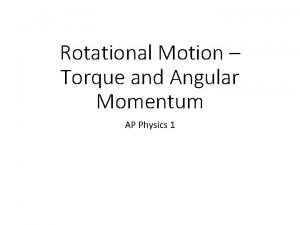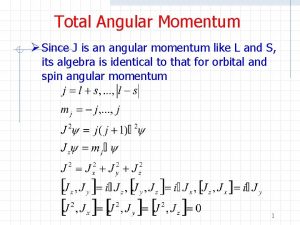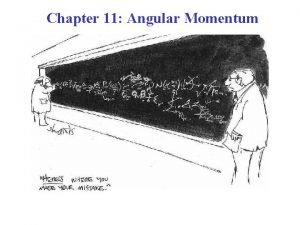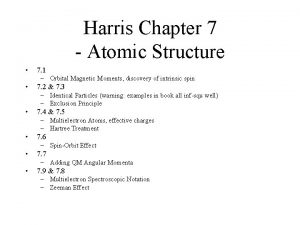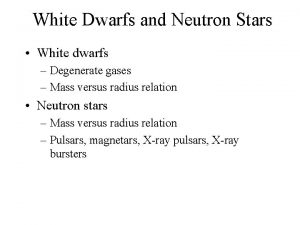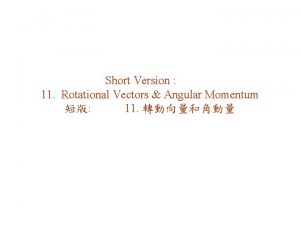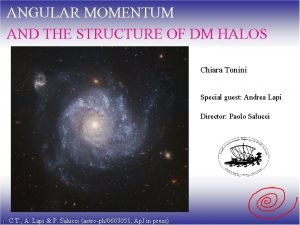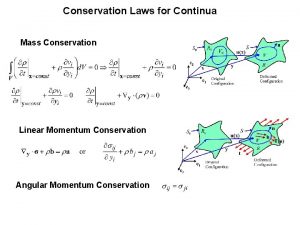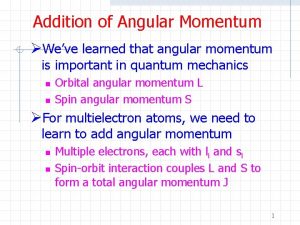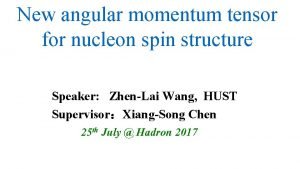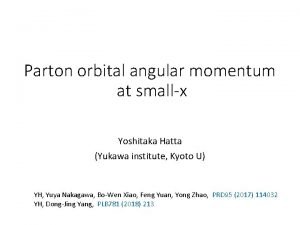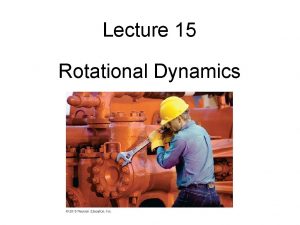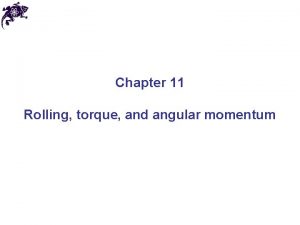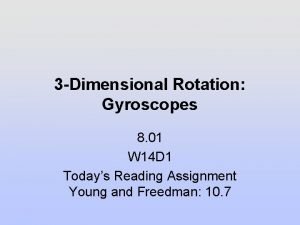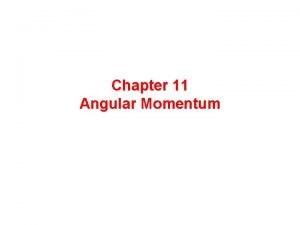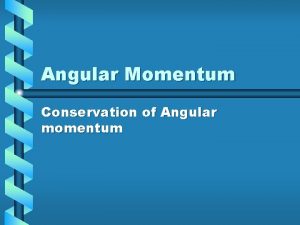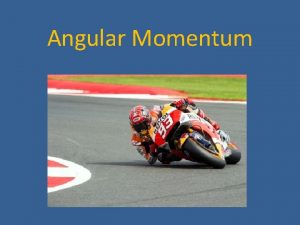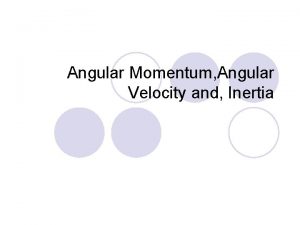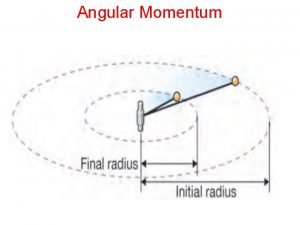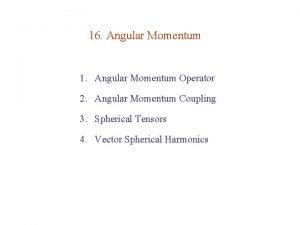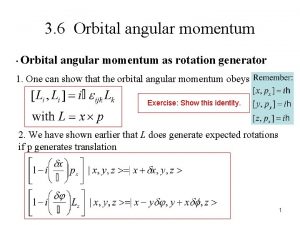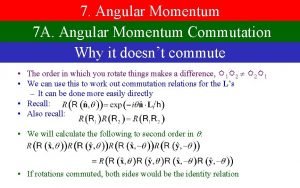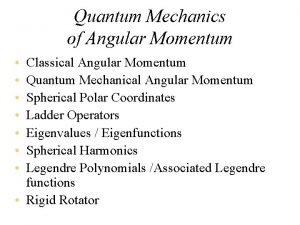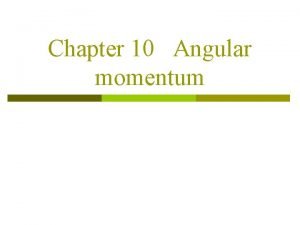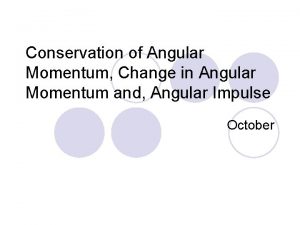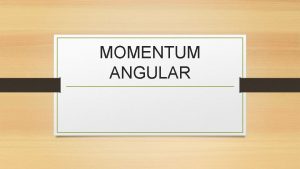Total Angular Momentum Since J is an angular















- Slides: 15

Total Angular Momentum Ø Since J is an angular momentum like L and S, its algebra is identical to that for orbital and spin angular momentum 1

Total Angular Momentum Ø We can determine the possible values of j by looking at the z components n The maximum value of j is the maximum value of ml and ms is l+s Ø The minimum value of j can be found using the vector inequality Ø Thus j runs from 2

Addition of Angular Momentum ØThese rule hold true for the addition of any two types of angular momenta ØExample n n n What are the possible s and ms values for the combination of two spin 1/2 particles? What are the possible l and ml values for two electrons having l 1=1 and l 2=2? What are the possible j and mj values for one electron with l=2 and s=1/2? 3

Fine Structure Ø For the hydrogen atom, we found that when one includes the spin-orbit interaction n, l, ml, s, ms are no longer “good” quantum numbers Ø Instead we must use n, l, s, j, mj Ø We usually use spectroscopic notation to describe these states Ø We’ll use this notation for multielectron states as well 4

Fine Structure ØExamples n n What are first three states (ground and first two excited states) for hydrogen? What are l, s, j values for 3 F 2? 5

Fine Structure Ø The potential energy associated with the spinorbit interaction was calculated as Ø Additionally we noted Ø Hence 6

Fine Structure Ø Furthermore, the energy eigenvalues are just the expectation values of H and with time you could show Ø The point is that the spin-orbit interaction lifts the 2 l+1 degeneracy in l 7

Fine Structure Ø Hydrogen fine structure 8

Fine Structure Ø The selection rules for transitions between states must be updated as well 9

Fine Structure ØTransitions with spin-orbit interaction 10

Two Body Problem ØTwo body systems (proton and electron, two electrons, …) are obviously important in quantum mechanics ØA two body problem can be reduced to an equivalent one body problem if the potential energy one depends on the separation of the two particles 11

Two Body Problem 12

Two Body Problem Ø This equation is now separable Ø The two equations represent n n A free particle equation for the center-of-mass A one body equation using the reduced mass and relative coordinates 13

Two Body Problem Ø In the case of a central potential problem (like He) with m 1=m 2=m Ø The point is the following: the interchange of two particles in central potential simply means 14

Two Body Problem Ø Particle interchange in the central potential problem means Ø This means Ø Under particle interchange of 1 and 2 n n The radial wave function is unchanged The symmetry of the angular wave function depends on l 15
 Angular momentum theorem
Angular momentum theorem Momento angular total
Momento angular total Conceptual physics momentum
Conceptual physics momentum Angular momentum unit
Angular momentum unit Orbit angular momentum
Orbit angular momentum Angular momentum
Angular momentum Rolling torque and angular momentum
Rolling torque and angular momentum Quantum angular momentum toy
Quantum angular momentum toy Conservation of linear momentum
Conservation of linear momentum Orbital angular momentum quantum number
Orbital angular momentum quantum number @ebbiya
@ebbiya Orbital angular momentum
Orbital angular momentum Moment of inertia of a dumbbell
Moment of inertia of a dumbbell The angular momentum
The angular momentum Flywheel angular momentum
Flywheel angular momentum Rolling torque and angular momentum
Rolling torque and angular momentum
